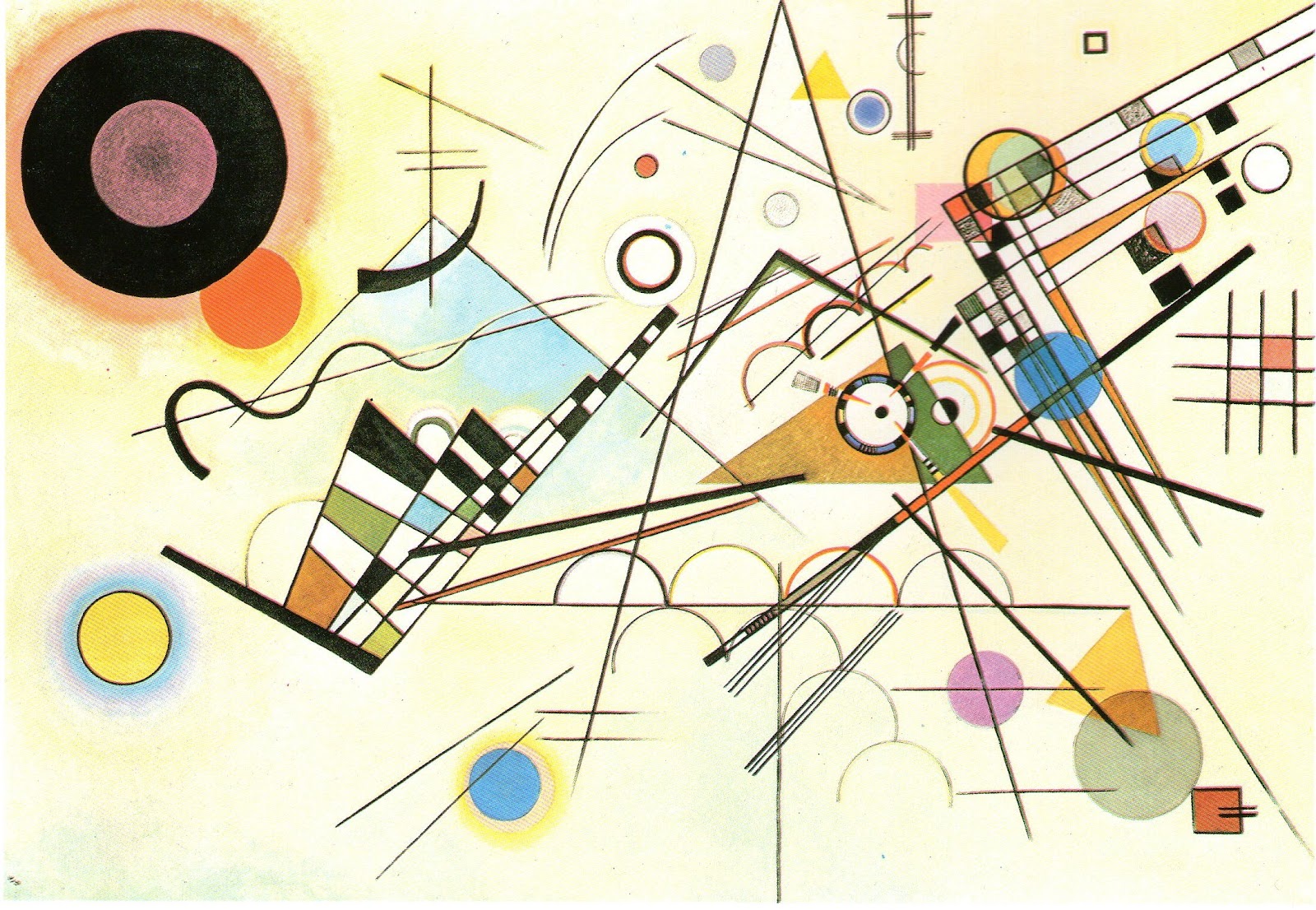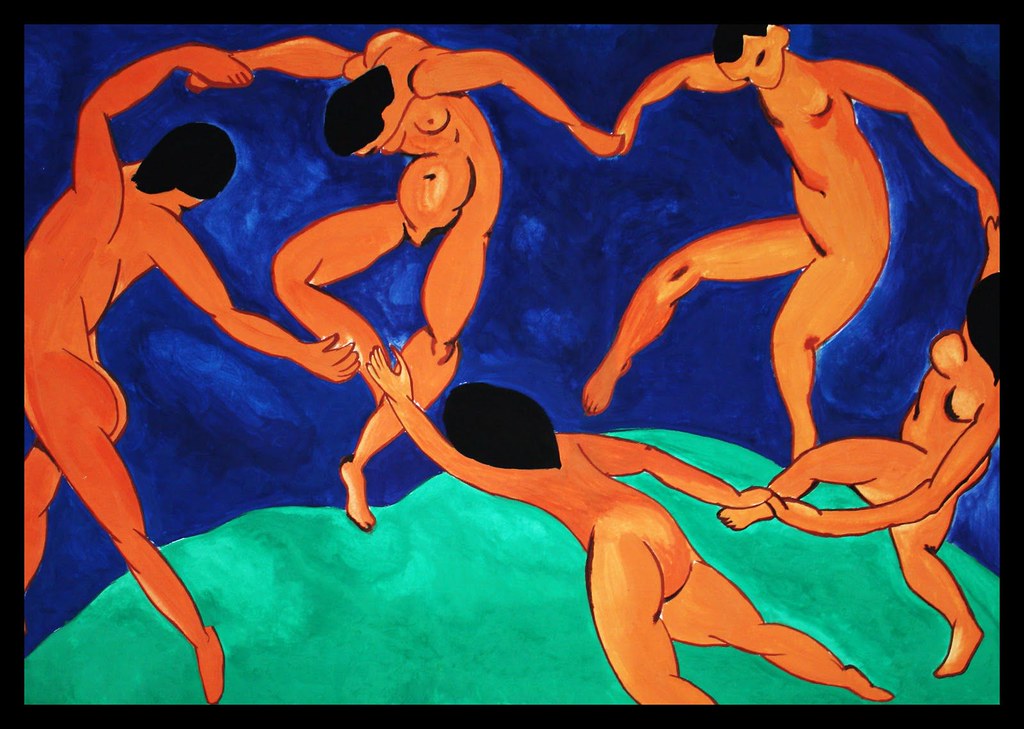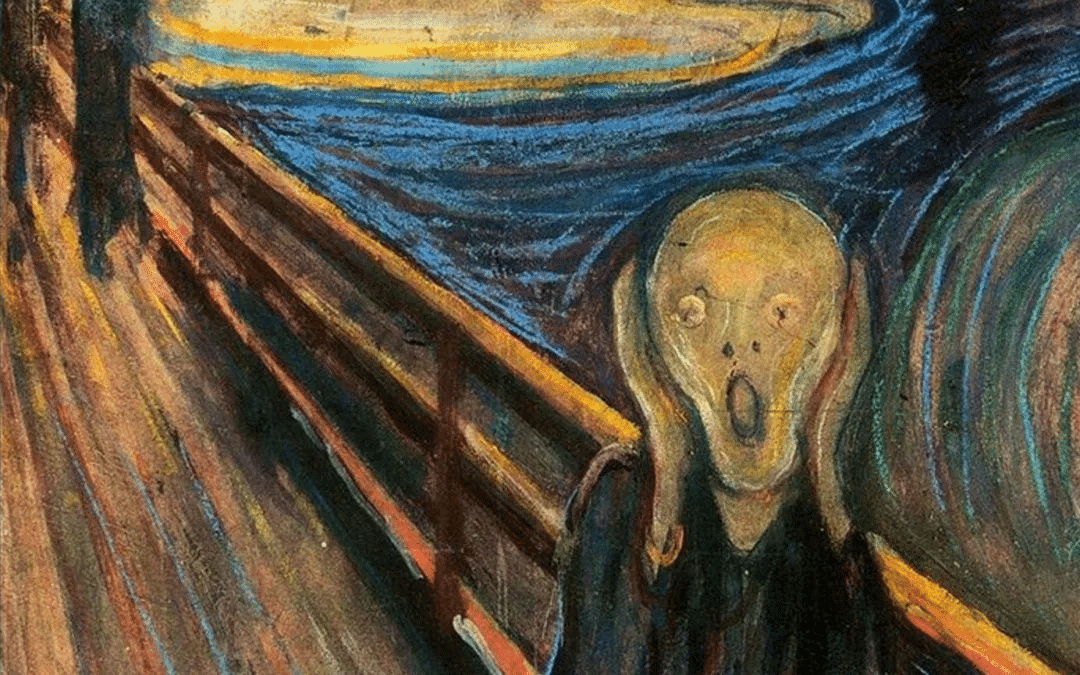
Kandinsky's work
Modern art, or that which takes place from the end of the 70th century to approximately the XNUMXs, is made up of a series of movements, many of which you will surely recognize.
In this post we are going to talk about some of them, specifically from those that initially emerged (from Impressionism to Dadaism). We will also see its main artists. Let's start this fascinating tour of each one of them!
Impressionism
Impressionism is the first great movement in modern art. It is characterized by the search for light, painting in the open air. In this way, the paintings acquire lively and energetic tones, with blurred and blurred figures that capture the transience of the moment. This movement contrasts with the representation that was previously made of the figures, very defined and full of identity, painted in the studios. Stand out in this period Claude Monet.
Post-impressionism
Four great artists stand out here: Van Gogh (you can learn more about his peculiar life in this previous post), Gauguin, Seurat and Cézanne. It continues to have an "impressionist brushstroke" but paintings acquire greater expressiveness and they are more subjective, ceasing to represent nature faithfully.
Primitivism
Before the great influence of impressionist art, a more primitive art arises. The artist wants to go back to the origins, inspired by peasant culture (painted plates, objects with typical colors ...), African masks, objects from prehistoric peoples ... Klimt highlights.
Pointillism
Here the color acquires special relevance, being applied on the canvases millions of color dots separated from each other, being the human eye the one that superimposes and mixes them.
Fauvism or fovism
Fauvism tries to break with previous aesthetic values, creating, in a nonconformist way, colorful paintings where the shape of the figures does not matterbut the emotions they convey. Henri Matisse stands out.

The Dance, by Henri Matisse
In Germany, inspired by Fauvism, Expressionism, and Primitivism the Blue Rider rises. It is the beginning of abstraction, of separation from the real world. The artist Kandinsky stands out especially.
Expressionism
The paintings gain in expressiveness, in such a way that what is seen is not painted, but what is felt in the face of what is seen. Van Gogh also stands out in this movement, as does Edvard Munch, with his famous painting The Scream.

The Scream, by Munch
Cubism and Constructivism
Cubism opens with The Ladies of Avignon, by Pablo Picasso (learn more about her curious life in this previous post). In this movement, all the elements of the work are brought to the fore, challenging perspective and using geometric shapes.
In constructivism, geometric shapes also stand out, in addition to materials, architecture and technology, emphasizing the design of all kinds of objects.
Futurism
This movement, by the hand of Marinetti, rejects traditional aesthetics, extolling machines and their movement associated. Thus, we are shown an action-packed, dynamic reality.
Vorticism
It is a mix between cubism and futurism, extolling vortices as points of maximum energy, according to Ezra Pound.
Suprematism
This movement is intended to make the viewer feel with the work, eliminating any real known object in it. For it, order is created, silhouettes are simplified, and colors are reduced to a few. Malevich emphasizes.
Neoplasticism
The paintings continue to be simplified, coming to be represented with only three primary colors: red, blue and yellow. Geometric shapes are also only two: square and rectangle. Also, only horizontal and vertical lines are painted. Artists totally move away from the realistic representation of art. Mondrian stands out.
Dadaism
These are intellectual anarchists, artists who wanted to destroy art, in a reaction against the established powers and after World War I. Without achieving their purpose, they gave rise to the development of pop art, punk, conceptual art, surrealism ... Dadaists made fun of the bourgeois artist and beauty as it was known, creating works with unusual materials, resorting to satire and provocation. Tristan Tzara stands out.
And you, with which modern art movement do you most identify?